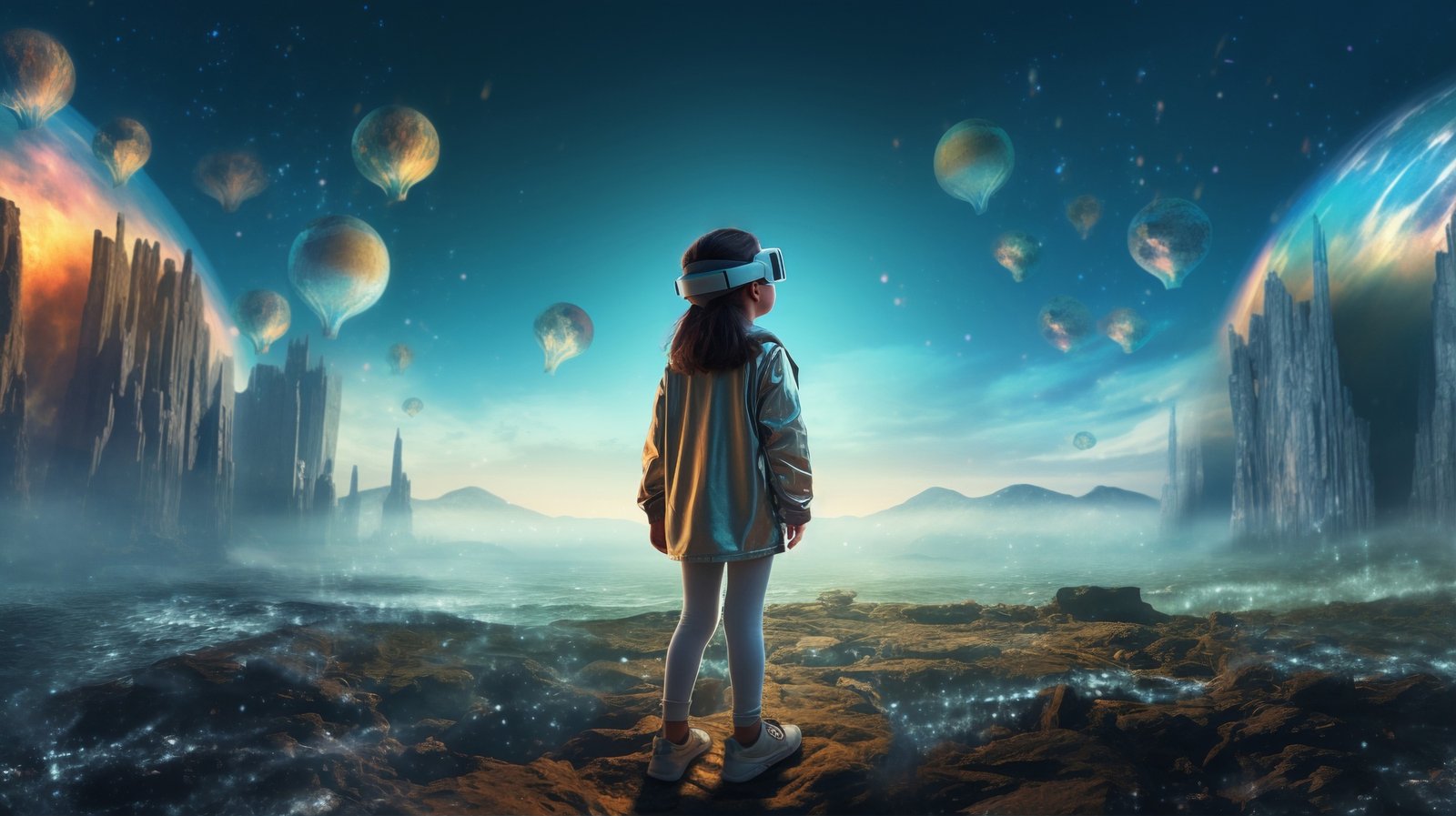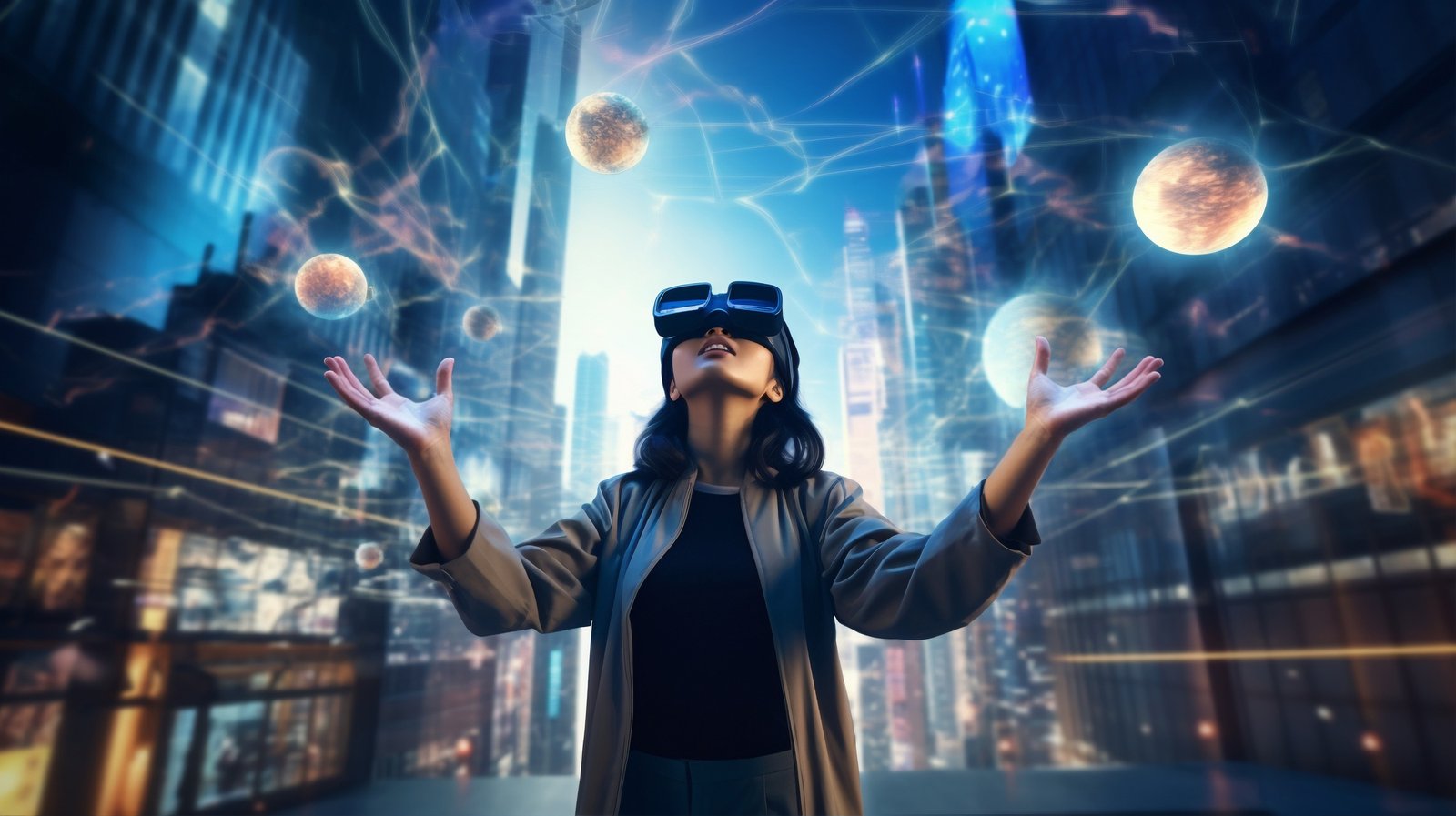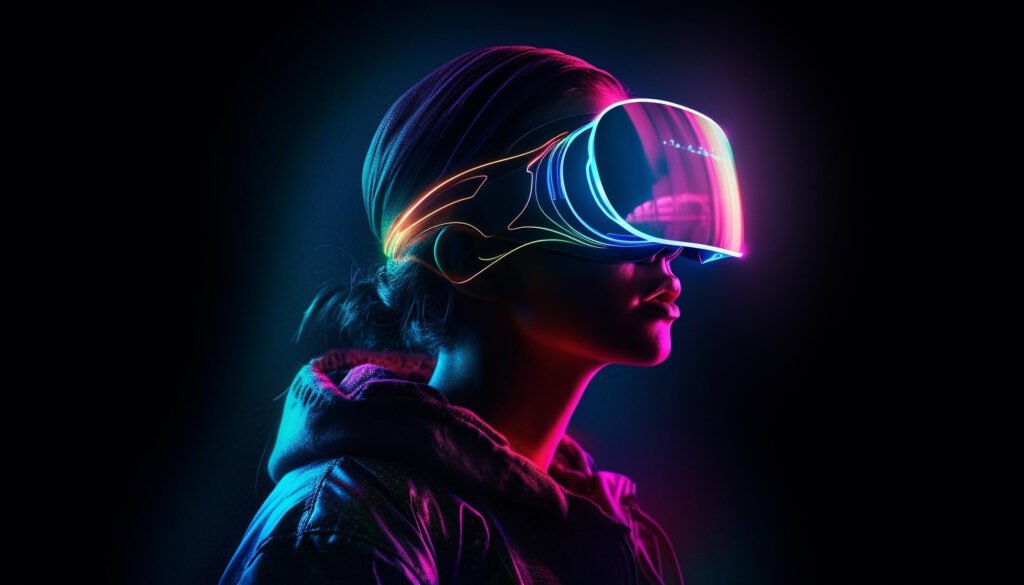The metaverse and virtual reality (VR) in education
Definition of the metaverse in education
The metaverse and virtual reality (VR) in education; In the context of education, the term “metaverse” refers to a virtual, immersive setting where instructors and students can communicate, work together, learn, and produce content in a mock digital world. It creates a rich and captivating learning environment by fusing components of mixed reality (MR), augmented reality (AR), virtual reality (VR), and other new technologies.
Students can attend virtual classes, take part in interactive experiments and simulations, explore historical locations or scientific ideas in three dimensions, and interact with digital artifacts and things in the educational metaverse.
Within the virtual environment, educators can create personalized learning experiences, lead discussions, give immediate feedback, and monitor the progress of their students.

By removing barriers to learning based on geography, providing individualized learning experiences, accommodating various learning styles, and encouraging cooperation, the metaverse has the potential to completely transform education.
TYPES OF METAVERSE ARE:
Social Metaverse:
Community development and social interactions are given priority in social metaverses. They frequently mimic virtual worlds where users can make avatars, socialize, attend events, and engage in a range of activities with one another.
Educational Metaverse:
As previously indicated, these are metaverses created especially with education and learning in mind. They provide interactive simulations, virtual classrooms, and student-specific educational content.
Metaverse for Gaming:
Metaverses for gaming are focused on game experiences. They provide players realistic virtual worlds in which they can interact, compete, collaborate, and play a variety of games.
Corporate Metaverse:
Professional and business-related activities are the main emphasis of corporate metaverses. They are utilized for online conferences, meetings, training sessions, and project collaboration.
Entertainment Metaverse:
These virtual worlds provide immersive media and entertainment experiences. Movie theaters, art galleries, and other digital entertainment venues can be among them.
Decentralized Metaverse:
Based on blockchain technology, decentralized metaverses give priority to user ownership, decentralization, and interoperability. Virtual economies, digital assets, and user-generated material that may be purchased, sold, or exchanged inside the metaverse are frequently involved.
Origin of the metaverse:
Science fiction author Neal Stephenson popularized the idea of the metaverse in his 1992 book “Snow Crash.” American writer Stephenson used the phrase “metaverse” to refer to a virtual reality-based replacement for the internet in which users utilize avatars to engage with digital settings and one another in a three-dimensional area.
Stephenson’s influential novels contributed significantly to the molding and popularization of the metaverse idea, even if he did not technically “discover” it. Since then, the concept of the metaverse has sparked a lot of conversations, technological advancements, and practical uses in a variety of industries, such as gaming, education, business, and entertainment.
Definition
The merging of virtually enhanced physical reality and physically persistent virtual reality gives rise to the metaverse, a communal virtual shared world. It includes the internet, virtual reality, and augmented reality.
To put it plainly, the metaverse is a virtual world that users may engage with on different virtual locations and platforms, as well as digital objects that are frequently represented by avatars. People will be able to work, play, socialize, study, and create in a seamless and immersive online environment that dissolves the boundaries between the real and virtual worlds.
features of the metaverse
Immersive Environments:
Through the use of augmented reality (AR), virtual reality (VR), and other immersive technologies, users can explore and interact with immersive virtual environments found in the metaverse.
Persistent World:
The metaverse is a persistent digital environment that enables continuous communication and cooperation because user modifications are retained throughout time. Avatar Representation: To facilitate social interaction and personalization, users usually make avatars to represent themselves in the metaverse.
Social Interaction:
Facilitating communication, teamwork, and socialization among users in virtual environments, social interaction is an essential component of the metaverse. User-Generated Content: People are frequently able to produce and add their own content to the metaverse, including
features of the metaverse can be synthesized and summarized as follows:
Engaging digital worlds made possible by VR, AR, or other immersive technologies are known as immersive virtual environments. Persistent and Dynamic: An ever-changing digital environment in which user choices have long-term consequences.

Based Interaction:
Using movable avatars, users communicate and navigate with each other. Social connectivity: Promotes sociability, teamwork, and real-time communication. material Made by people: Enables people to create, share, and engage with digital material.
Economic Ecosystem:
Facilitates trade and transactions in virtual economies.
Cross-Platform Accessibility:
Provides a smooth user experience by being compatible with a range of platforms and devices. Facilitates communication and exchange of information amongst various metaverse platforms and systems. Protects user privacy and the security of their data while they are using digital platforms.
Scalability:
The ability to support big user populations and exchanges.
The framework of the metaverse in education
A variety of components are included in the education metaverse framework with the goal of improving learning through immersive digital environments. Here’s a summary of the essential elements:
Virtual classrooms:
Set aside online areas for instruction, discussion, and cooperative learning where instructors and students can come together. These virtual classrooms can be imaginatively created to meet particular educational needs, or they might mimic real-world environments.
Using augmented reality (AR), virtual reality (VR), and mixed reality (MR) technology to create immersive learning experiences is known as immersive learning. This includes interactive instructional materials, simulations, and virtual field trips that encourage students to learn by doing.
Personalized Learning Paths:
are adaptive learning platforms that modify lesson plans and assignments to meet the needs and learning preferences of specific students. Data on student performance can be analyzed by machine learning techniques to offer individualized guidance and assistance.
Collaborative Spaces:
Online settings that promote student cooperation and group projects so they can work together on assignments, presentations, and problem-solving exercises regardless of where they are in the world.
Tools for Interactive Content Creation:
Easy-to-use platforms and tools that let instructors and students create, share, and engage with digital content. Multimedia presentation tools, 3D modeling software, and virtual laboratories are a few examples of this.
The metaverse and virtual reality (VR) in education; The integration of virtual mentoring and tutoring services is intended to offer students extra help and direction. Within the metaverse, virtual instructors and mentors can provide one-on-one support, criticism, and direction.
Assessment and Feedback Mechanisms:
To assess student progress and deliver timely feedback, assessment tools and feedback mechanisms are implemented within the metaverse. This could involve tests,

